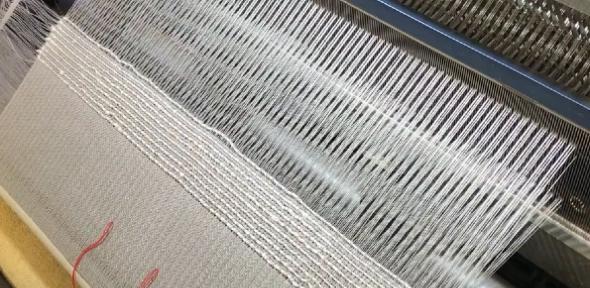
Researchers have developed next-generation smart textiles – incorporating LEDs, sensors, energy harvesting, and storage – that can be produced inexpensively, in any shape or size, using the same machines used to make the clothing we wear every day.
The international team, led by the University of Cambridge, have previously demonstrated that woven displays can be made at large sizes, but these earlier examples were made using specialised manual laboratory equipment. Other smart textiles can be manufactured in specialised microelectronic fabrication facilities, but these are highly expensive and produce large volumes of waste.
However, the team found that flexible displays and smart fabrics can be made much more cheaply, and more sustainably, by weaving electronic, optoelectronic, sensing and energy fibre components on the same industrial looms used to make conventional textiles. Their results, reported in the journal Science Advances, demonstrate how smart textiles could be an alternative to larger electronics in sectors including automotive, electronics, fashion and construction.
"We could make these textiles in specialised microelectronics facilities, but these require billions of pounds of investment. In addition, manufacturing smart textiles in this way is highly limited, since everything has to be made on the same rigid wafers used to make integrated circuits, so the maximum size we can get is about 30 centimetres in diameter." Dr Sanghyo Lee, Dept of Engineering, University of Cambridge
The researchers have shown that smart textiles can be made using automated processes, with no limits on their size or shape. Multiple types of fibre devices, including energy storage devices, light-emitting diodes, and transistors were fabricated, encapsulated, and mixed with conventional fibres, either synthetic or natural, to build smart textiles by automated weaving. The fibre devices were interconnected by an automated laser welding method with electrically conductive adhesive.
Publication: Sanghyo Lee et al. ‘Truly form-factor-free industrially scalable system integration for electronic textile architectures with multifunctional fiber devices.’ Science Advances (2023). DOI: 10.1126/sciadv.adf4049
Image: Sanghyo Lee

